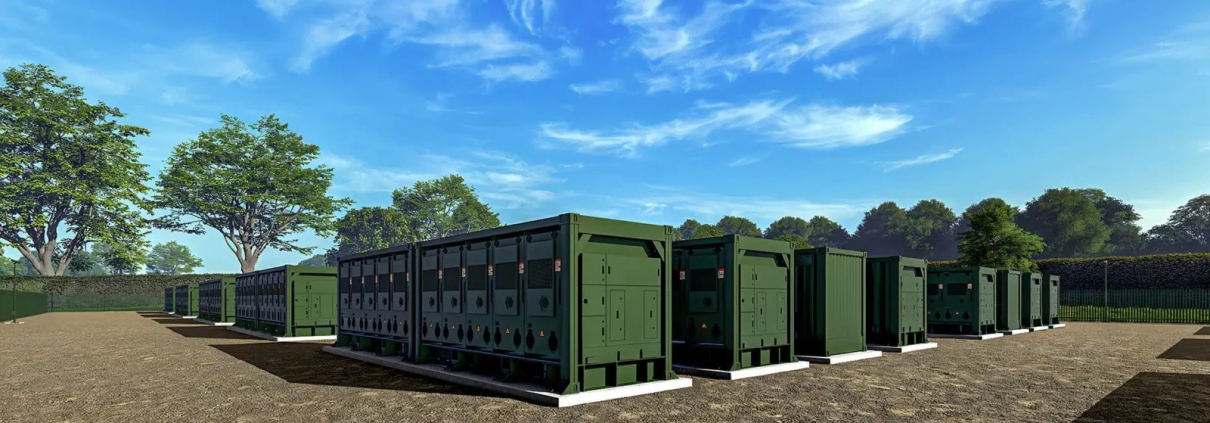BESS Cooling Systems: Why Thermal Management Shapes the Future of Energy Storage
Introduction
In battery energy storage systems (BESS), cooling is one of the most critical factors that determines safety, lifespan, and performance. Many professionals who search for “BESS cooling system” are not necessarily looking for a standalone cooling solution. Instead, they are looking for reliable BESS solutions where cooling technology plays a central role.
This article explains why thermal management is so important, introduces mainstream cooling approaches, and shows how an integrated liquid-cooled BESS — such as the Leoch Liquid-Cooled BESS — addresses these challenges.
Why Is Cooling So Critical for BESS?
Battery packs in large-scale storage consist of thousands of cells. During charge and discharge, they generate significant heat due to:
- Electrochemical reactions inside cells
- Internal resistance at high current flows
- External environmental conditions such as high ambient temperatures
Without effective cooling, operators face:
- Safety risks — overheating can trigger thermal runaway
- Accelerated degradation — uneven cell aging reduces system life
- Efficiency losses — performance drops under heat stress
In short, cooling is not optional; it is a core requirement for reliable BESS operation.
Cooling Approaches in BESS
- Air Cooling
- Uses fans or blowers to circulate air
- ✅ Low cost and simple design
- ❌ Poor performance in high-density systems; uneven temperature distribution
- Best for small- and medium-scale projects
- Liquid Cooling
- Circulates coolant through modules to absorb heat
- ✅ High efficiency, uniform temperatures, scalability for MW-level systems
- ❌ Higher cost, requires leak-proof design
- Now the dominant approach for large BESS projects
- Immersion Cooling (Emerging)
- Batteries are submerged in dielectric liquid
- ✅ Excellent heat transfer, full-surface cooling, enhanced safety
- ❌ Still costly and experimental
- Potential for future large-scale, safety-critical applications
Cooling as Part of the BESS Selection Process
When people search for “BESS cooling system,” their real concern is whether the energy storage solution they choose will remain safe, durable, and efficient.
Cooling should not be viewed as an add-on or standalone device. Instead, it should be evaluated as an integrated design factor of the BESS itself. The best option is to select a system that already comes with built-in advanced thermal management, ensuring better performance and fewer compatibility issues.
Case Study: Leoch Liquid-Cooled BESS
The Leoch Liquid-Cooled BESS illustrates how integrated liquid cooling enhances overall system reliability. Designed as a complete solution, it addresses heat management at the system level.
Key advantages include:
- Temperature uniformity — minimizes cell-to-cell variation, extending system lifespan
- Safety compliance — reduces thermal runaway risks; aligned with UL9540A standards
- Operational stability — performs reliably under high-load and high-temperature conditions
- Scalability — suitable from commercial deployments to large grid-scale storage
For decision-makers, choosing a BESS like this means not only solving the cooling challenge but also ensuring long-term reliability and safety.
Future Trends in BESS Cooling
- Smarter Integration — Cooling systems will be increasingly integrated with BMS for real-time predictive thermal management
- Hybrid Cooling — Combining air and liquid cooling for optimized performance-to-cost ratios
- Immersion Cooling Expansion — As costs fall and case studies grow, immersion may gain traction in critical sectors
- Energy Efficiency Focus — Borrowing from data centers, future BESS will emphasize minimizing the energy consumed by cooling systems
Conclusion
Thermal management is no longer a secondary consideration — it is at the heart of BESS safety, performance, and ROI.
- Air cooling remains viable for smaller, cost-sensitive applications.
- Liquid cooling is now the mainstream for large-scale and high-reliability storage.
- Immersion cooling represents the future frontier.
For organizations searching for “BESS cooling system,” the smarter choice is to invest in a BESS solution with integrated advanced cooling. The Leoch Liquid-Cooled BESS demonstrates how liquid cooling can enhance both safety and efficiency, helping operators future-proof their energy storage investments.
📌 Now — Does this feel thin? How to make it more competitive
Yes, while the article already covers types of cooling, benefits, and product tie-in, it can be further extended to make it stand out in SEO and technical depth:
- Add Quantitative Data & Benchmarks
- Example: Compare temperature uniformity between air vs liquid cooling (e.g., ±5°C vs ±2°C).
- Show how liquid cooling improves battery cycle life by a certain %.
- Reference standards (UL9540A, NFPA 855, IEC 62933) with context.
- Include Application Scenarios in Detail
- Grid-scale storage in hot climates (e.g., deserts in the Middle East).
- Data centers requiring 24/7 cooling redundancy.
- Renewable integration where high charge/discharge cycles stress batteries.
- Highlight TCO (Total Cost of Ownership) Benefits
- Cooling efficiency → lower O&M costs
- Extended lifespan → higher ROI
- Safety → reduced insurance premiums / compliance risk
- Add Visual Aids / Comparative Tables
- Cooling method comparison table (air vs liquid vs immersion)
- Lifecycle cost chart (CAPEX vs OPEX savings with liquid cooling)
- Strengthen the Product Hook
Currently the Leoch link is introduced once. You can repeat it naturally in:
- The “Case Study” section
- The “Conclusion” as a recommended path
- Possibly in a call-to-action box: “Discover how Leoch integrates liquid cooling into scalable BESS solutions → Explore product page”


